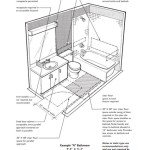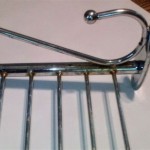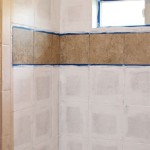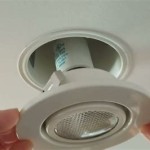Best Drain Cleaner For Clogged Bathroom Sink
A clogged bathroom sink is a common household plumbing issue. Blockages typically result from the accumulation of hair, soap scum, toothpaste residue, and other debris that gradually restrict water flow. While professional plumbing services offer solutions, many homeowners seek readily available drain cleaners to address minor clogs. Selecting the best drain cleaner requires understanding the various types available, their effectiveness, and their potential impact on plumbing systems.
This article discusses several effective drain cleaner options for bathroom sinks, outlining their mechanisms of action, advantages, disadvantages, and safety considerations. Understanding these factors empowers individuals to make informed decisions regarding drain cleaning products and techniques.
Understanding the Types of Drain Cleaners
Drain cleaners are broadly categorized into chemical, enzymatic, and physical methods. Each type employs a distinct approach to dissolving or dislodging clogs.
Chemical Drain Cleaners: These cleaners contain potent chemicals that react with the organic matter causing the blockage. Common active ingredients include sodium hydroxide (lye) and sulfuric acid. Chemical drain cleaners are typically available in liquid, gel, and crystal forms. Liquid and gel formulations are designed to cling to the pipe walls, providing prolonged contact with the clog. Crystalline forms require water to activate the chemical reaction.
The mechanism of action for alkaline chemical drain cleaners (like those containing sodium hydroxide) involves saponification, a process that converts fats and grease into soap. The heat generated by the reaction can also help to melt or dislodge some materials. Acidic chemical drain cleaners (containing sulfuric acid) are more aggressive and often used for severe clogs. They dissolve organic matter through a process of oxidation and dehydration.
Enzymatic Drain Cleaners: These cleaners utilize enzymes and bacteria to break down organic waste. They are generally considered environmentally friendly and safe for plumbing systems. Enzymatic cleaners target specific organic materials, such as hair, grease, and soap scum, without harming pipes or the environment. The enzymes act as catalysts, accelerating the natural decomposition process.
Enzymatic drain cleaners are typically sold in liquid or powder form. They require time to work, usually several hours or overnight, as the enzymes gradually digest the clog. Unlike chemical cleaners, they do not generate heat or produce corrosive byproducts.
Physical Drain Cleaning Methods: These methods involve manually removing the clog using tools such as plungers, drain snakes (also known as augers), and wet/dry vacuums. Physical methods are often effective for removing large or solid obstructions that chemical or enzymatic cleaners cannot dissolve.
A plunger creates a vacuum seal around the drain opening. Repeated plunging action generates pressure that can dislodge the clog. Drain snakes are flexible tools that can be inserted into the drainpipe to break up or retrieve the blockage. Wet/dry vacuums can be used to suction out standing water and debris from the drain.
Evaluating Effectiveness and Safety
The effectiveness of a drain cleaner depends on the nature and severity of the clog, as well as the type of cleaner used. Safety considerations are also paramount, as some drain cleaners can pose risks to human health and plumbing systems.
Effectiveness of Chemical Drain Cleaners: Chemical drain cleaners are generally effective for dissolving organic clogs, such as hair and grease. They can work quickly, often clearing the drain within minutes or hours. However, they may not be effective for removing solid objects or mineral deposits.
A significant drawback of chemical drain cleaners is their potential to damage pipes, particularly older metal pipes. The heat generated by the chemical reaction can soften plastic pipes, leading to leaks or cracks. Prolonged or repeated use of chemical drain cleaners can also corrode metal pipes, causing them to weaken and eventually fail.
Effectiveness of Enzymatic Drain Cleaners: Enzymatic drain cleaners are effective for preventing clogs and maintaining drain cleanliness. They break down organic matter slowly and steadily, preventing buildup and ensuring consistent water flow. However, they may not be effective for clearing existing, severe clogs.
The primary advantage of enzymatic drain cleaners is their safety. They are non-corrosive and non-toxic, making them safe for all types of pipes and for the environment. They are also less likely to cause skin irritation or respiratory problems compared to chemical drain cleaners.
Effectiveness of Physical Drain Cleaning Methods: Physical methods are often the most effective for removing solid clogs or obstructions that chemical and enzymatic cleaners cannot dissolve. A plunger can dislodge minor clogs, while a drain snake can break up or retrieve more stubborn blockages. Wet/dry vacuums can be used to remove standing water and debris from the drain, improving the effectiveness of other cleaning methods.
Physical methods are generally safe for plumbing systems, but they require care to avoid damaging pipes or fixtures. Overly aggressive plunging or snaking can damage the drainpipe or scratch the sink surface. It is important to use the appropriate tools and techniques to avoid causing further problems.
Specific Drain Cleaner Products and Techniques
Several drain cleaner products and techniques are commonly used to address clogged bathroom sinks. These include commercially available chemical drain cleaners, enzymatic drain cleaners, and homemade solutions.
Commercial Chemical Drain Cleaners: Many brands offer chemical drain cleaners specifically formulated for bathroom sinks. These products typically contain sodium hydroxide or sulfuric acid as the active ingredient. It is crucial to follow the manufacturer's instructions carefully when using chemical drain cleaners, including wearing protective gloves and eyewear to prevent skin or eye irritation. Proper ventilation is also essential to avoid inhaling harmful fumes.
Examples of common chemical drain cleaners include Liquid-Plumr, Drano Max Gel, and Zep Liquid Heat Drain Opener. These products are readily available at most hardware stores and supermarkets. When using chemical drain cleaners, it is important to avoid mixing different products, as this can create dangerous chemical reactions. After using a chemical drain cleaner, flush the drain thoroughly with water to remove any remaining residue.
Enzymatic Drain Cleaners: Several brands offer enzymatic drain cleaners that are safe for all types of pipes and the environment. These products typically contain a blend of enzymes and bacteria that break down organic waste. Enzymatic drain cleaners are often used as a preventative measure to maintain drain cleanliness and prevent clogs from forming.
Examples of enzymatic drain cleaners include Bio-Clean Drain Septic Bacteria, Green Gobbler Drain Opening Pacs, and Thrift Marketing GIDDS-539677 Drain Cleaner. These products are typically available at hardware stores, online retailers, and some supermarkets. When using enzymatic drain cleaners, it is important to follow the manufacturer's instructions and allow sufficient time for the enzymes to work.
Homemade Drain Cleaner Solutions: Several homemade solutions can be used to clear minor clogs in bathroom sinks. These solutions typically involve using common household ingredients such as baking soda, vinegar, and boiling water.
One popular homemade drain cleaner solution involves pouring a cup of baking soda down the drain, followed by a cup of vinegar. The mixture will fizz and bubble, helping to dislodge the clog. After 30 minutes, pour a kettle of boiling water down the drain to flush away the remaining debris. This method is generally safe for most types of pipes, but it may not be effective for severe clogs.
Another homemade solution involves using a combination of baking soda, salt, and boiling water. Mix equal parts of baking soda and salt, pour the mixture down the drain, and then follow with a kettle of boiling water. This method can help to break down grease and other organic matter causing the clog. It is important to use caution when pouring boiling water down the drain, as it can damage some types of pipes or fixtures.
Using a Plunger: A plunger is a simple and effective tool for clearing minor clogs in bathroom sinks. To use a plunger effectively, first ensure that there is enough water in the sink to cover the cup of the plunger. Create a tight seal around the drain opening with the plunger cup and then repeatedly plunge up and down vigorously. After several plunges, remove the plunger to see if the clog has been dislodged. Repeat the process if necessary. If the plunger is not effective, consider using a drain snake or other cleaning method.
Using a Drain Snake (Auger): A drain snake is a flexible tool that can be inserted into the drainpipe to break up or retrieve the clog. To use a drain snake, carefully insert the snake into the drain opening and feed it down the pipe until you encounter the clog. Rotate the snake to break up the clog or to hook onto it and pull it out. Once the clog has been removed, flush the drain with water to ensure that it is clear. Drain snakes are available in various lengths and sizes, so choose one that is appropriate for the size of the drainpipe.
Consider Professional Help: Despite the numerous available options, some clogs are too severe or complex for at-home remedies. If the clog persists after attempting various cleaning methods, or if there are signs of a more serious plumbing problem, consider contacting a licensed plumber. Plumbers have the expertise and equipment to diagnose and resolve complex plumbing issues safely and effectively. Attempting to fix a complex plumbing problem without the necessary skills and equipment can potentially worsen the situation and lead to more costly repairs.

9 Best Drain Cleaners Of 2024 For Clogged Sinks Toilets Tubs

9 Best Drain Cleaners Of 2024 For Clogged Sinks Toilets Tubs

The 10 Best Drain Cleaners In 2024

Comfort 101 When Should I Use Chemical Drain Cleaners Spirit 105 3

8 Best Drain Cleaners For All Clogs In 2024 Plus Expert Tips

11 Best Drain Cleaners Of 2024 Easy Ways To Unclog Sinks And Toilets

Green Gobbler Vs Drano Which Drain Cleaner Is Better Prudent Reviews

How To Clean Drains And Unclog Shower Or Sink Today

Green Gobbler Drain Clog Remover Cleaner For Toilets Sinks Showers Septic Safe 31 Oz Com

6 Ways To Fix Clogged Drains Keep Pipes Flowing Freely Horizon Services
Related Posts







